June 7 - 13, 2015: Issue 217
Sydney’s First Natatorium or Indoor Swimming Baths
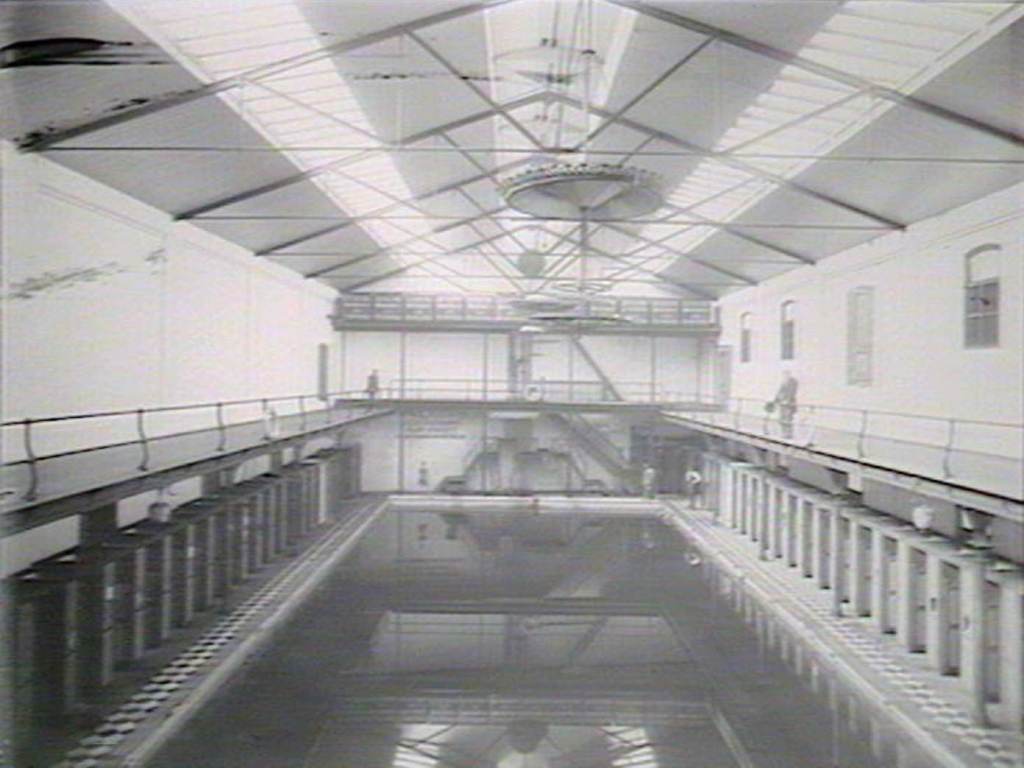
Inside the Natatorium - 298- 400 Pitt Street Sydney Imge: d1_09225h, GPO's - courtesy State Library of NSW
Sydney’s First Natatorium or Indoor Swimming Baths
Since Europeans have been coming to New South Wales the incidents of people swimming, or ‘bathing’ have formed part of records, mainly records of drowning unfortunately. Some were more along the line sof asking parents to take better care of youngsters:
A number of painful accidents have recently occurred from an injudicious choice of bathing places in and about Farm Cove and Cockle Bay, the sides of which are for the most part lined with coral and oyster rocks. Some of the accidents have been very serious, and in one instance threatened the necessity of amputation. Parents will we trust benefit by this caution, and admonish their children against the unnecessary hazard, as there are retired situations much better adapted to the recreation of bathing. Sydney. (1817, April 5). The Sydney Gazette and New South Wales Advertiser (NSW : 1803 - 1842), p. 2. Retrieved from http://nla.gov.au/nla.news-article2177167
In Pittwater the estuary’s pristine beaches would have been popular spots for swimmers, long before the area was promoted as a ‘resort’ which included ‘surf bathing’ as well. Estuary pools were the first marked off or gated to make them secure from the many sharks that once frequented the Pittwater. These were both public ones like that at Bayview, or private versions, fenced off in front of homes with jetties.
Those on the coast, once called baths, now swimming pools, were in many cases where a natural rock pool had already formed and been used prior to a more ‘concrete’ construction. As snow winds bring a touch of extra invigoration to early Winter mornings, some will head indoors to get their laps done in heated pools despite the residue summer warmth in ocean currents.
Which was the first large scale indoor pool in Sydney though – and how warm was it?
If you decide a Turkish Bath is pool enough, then the first was John Le Gay Brereton’s 120-150 degrees Fahrenheit 1859 edifice in Captain Cook's Hotel in Spring Street, Sydney.
If you require a bit more splashing about, some laps, some racing, perhaps even room for a spot of water polo, then the Natatorium, once a feature in Pitt Street towards the Haymarket end, of Brickfield Hill as it was more commonly called then, was where you went to have your splash of healthful bathing.
This pool was fed by saltwater from the harbour and a claim that the water was kept at 95 degrees year round, or ‘Summer Temperatures’. It took a few years for the Natatorium to be finally opened and then, soon after its first decade elapsed, became the People’s Palace, run by the Salvation Army, who seemed to have leased the premises at first and paid for them in 1904.
An article from November 6th, 1896, speaking of all suburbs should have free safe bathing facilities, particularly those far from the coast during hot weather, coupled with the fact that you had to pay and only had a limited time in the Pitt street Natatorium, may have made it an non-viable venture. Swimming clubs were everywhere during the 1880's in Sydney and people competed for good prizes or simply for prestige in amateur leagues. Another item points to the real problem - the hotel in which the pool was housed was unprofitable, and, although the pool was run as a separate venture, the profits from it were poured into keeping the hotel afloat.
The building at 400 Pitt street was subsequently sold again by them during the late 1980s and demolished in 1988 (398-408 Pitt Street), lasting only a mere century, although some semblance of the original facade was kept.
Interestingly, a new hotel is being proposed for next door this year – some indication of how people who strolled these hills and open vistas to Darling Harbour may have trouble recognising ‘Brickfield Hill’ as this part of own was known then, or any of the structures that now try to accommodate even more people an visitors into this vibrant end of Pittwater Street.
A natatorium (plural: natatoria) is a building containing a swimming pool. In Latin, a cella natatoria was a swimming pool in its own building, although it is sometimes also used to refer to any indoor pool even if not housed in a dedicated building (e.g., a pool in a school or a fitness club). It will usually also houselocker rooms, and perhaps allied activities, such as a diving tank or facilities for water polo. (1.)
This venture began with getting the periodicals of the time behind you:
After several years of talk, there actually appears at last to be a prospect of swimming' baths being established in Sydney. A prospectus of the Sydney Bathing Company, limited, has been issued, and along lease of a large piece of ground situated in Pitt street, between Goulburn and Campbell streets, has already been obtained. The bathing accommodation will consist of two large basins, supplied with a continuous flow of salt water. The scheme includes an aquarium. The Late Major-General Sir Peter H. Scratchley. (1885, December 12). Australian Town and Country Journal (Sydney, NSW : 1870 - 1907), p. 19. Retrieved from http://nla.gov.au/nla.news-article70987513
and then the public or investors:
PROSPECTUS OF THE SYDNEY BATHING COMPANY,LIMITED. ...(REGISTERED UNDER THE COMPANIES' ACT OF 1874-.)CAPITAL— .£20,000 in 20,000 Shares of £1 each. DIRECTORS.MAJOR ROWE, F.R.I. B.A., Architect CRAIG DIXSON, Esq., M.D., F.R.C.S.E. JOHN M'LEOD, Esq. WILLIAM HARRIS, Esq, Alderman JAMES POOLE. J. C. GOODWIN, Esq. BANKERS. The Federal Bank of Australia, Limited, Haymarket. SOLICITORS. Messrs. CURTISS & BARRY, 25 King-street. This Company is formed for the purpose of erecting extensive bathing accommodation in the very centre of the City of Sydney, consisting of two large Basins- for Swimming Baths, supplied by a continuous flow of salt water ; open to the public during Winter and Summer months from five o'clock in the morning till ten o'clock at night. In addition to this splendid opportunity for enjoying a swim in salt water, in the very heart of the City, at all hours of the day and during all seasons most extensive accommodation is also provided for Hot and Cold Water Private Baths constructed on the most approved principle, of a plain and comfortable or even elegant description, accessible to both sexes and suitably fitted up proportionate to the means of every one. The Directors of the Company have acquired for the foregoing purpose, and for giving such delightful facilities to the inhabitants of Sydney, a long lease', of a magnificent piece of land in Pitt street, between Goulburn and Campbell streets, within a stone's throw of the main Tram line and future Metropolitan Railway Station; facing Pitt street with a frontage of 134 feet and a depth of about 175 feet. No better site or more suitable locality could be obtained in the City of greater convenience for thousands to indulge in a swim on the road to or from business. The advice and experience of gentlemen fully acquainted with the construction and working of, such establishments in the old Country have been brought to bear in the laying out and arranging of the proposed premises, in order to secure the utmost economy in the erection and management. Provision is also made to combine with the foregoing purpose, an Aquariuni for instruction as well as for pleasurable enjoyment should the Company subsequently desire to do so. Many young idlers may thus be directed after working hours to practise cleanliness, and enjoy the sights and collections in connection therewith, instead of patronizing street corners and the attractions of street roving. The public are invited to take up shares on the following terms : 2s 6d per share to be paid on application ; 2s 6d per share on allotment ; the balance in calls of One Shilling per share at intervals of not less than one month. Applications for- Shares must be made in the accompanying form, together 'with a deposit of 2s 6d per Share, and sent to the Federal Bank, Haymarket, or to the Secretary of the Company. Temporary Office of the Company — 728 GEORGE-STREET, HAYMARKET, from whom the Prospectus and Forms of Application can be obtained. Apart from the beneficial influence which such an establishment will be sure to exercise ;on the community, from a sanitary point of view, it cannot fail to be also a financial success, as from calculations made, particulars of which may be obtained from the Secretary, a return of at least twelve per cent, can be expected. Advertising. (1885, December 19). Freeman's Journal (Sydney, NSW : 1850 - 1932), p. 19. Retrieved fromhttp://nla.gov.au/nla.news-article115467620
Engage and expert and capital value to land you don't own!:
SALT WATER BATHS FOR SYDNEY.
Mr. Robert Kunstman, CE., has prepared plans for saltwater baths to be erected in Pitt-street South, for the Sydney Bathing Company, Limited. This company has been projected with a capital of £20,000, for erecting two large basins for swimming baths, to be supplied with a continuous flow of salt water. The project was submitted to the City Council two months ago, as the company was anxious in the first place to obtain the use of the old pipes laid by the corporation for conveying the water to the baths, and after giving the matter due consideration the Council granted the desired permission. There-upon the projectors of the company obtained a twenty-one years' lease of a large block of land, the property of Mr. John Rae, from which they will pay aground rent of £1200 per annum. This land has a frontage of 134 feet to Pitt-street, between Goulburn and Campbell streets, by a depth of about 176 foot. SALT WATER BATHS FOR SYDNEY. (1886, January 16). The Sydney Morning Herald (NSW : 1842 - 1954), p. 11. Retrieved from http://nla.gov.au/nla.news-article13609166
Eventually ground was broken and a Foundation Stone laid by then Mayor of Sydney:
One silver trowel, diamond shaped flat blade has fan decoration around rim. The base has an engraved butterfly amongst flowers. The inscription is inside an opened fan. Octofoil haft rises to a mother-of-pearl handle. Silver hallmarks of T.M &Co, Queen Victoria, Birmingham Silver .925, 1885.
Inscribed with: "Presented by the chairman and directors of the Sydney Bathing Company to John Young Esquire, Mayor of Sydney on the occasion of laying the Foundation Stone, December 15th 1886". - held by State Library of NSW
What was this proposed building like though... a description for during its construction:
THE SYDNEY BATHING COMPANY’S BATHS
After some little delay operations in connection with the construction of tho baths which are to be built by the Sydney Bathing Company have been duly commenced, and in a comparatively short time Sydney will be provided with a very complete bathing establishment. The building is to be erected on a vacant piece of ground in Pitt-street, between Campbell and Goulburn streets, and will hate a frontage of 134 feet to the first mentioned thoroughfare. Very elaborate plans have been prepared, and if the design is faithfully executed the building will, besides supplying a want which has been felt to exist for a number of years, be a very creditable addition to the many noble structures which have been erected in the city at recent dates The work of excavating has been going on for the past few weeks, and already over 6000 cubic yards of clay have been removed, and two large swimming basins, each 100 feet by 40 feet, have been formed. The basin stalls, which are now in course of erection, will be constructed of substantial concrete. They will be double walls, and will be built in a manner which will prevent the percolation of water. Some progress has been made with the side walls of the main building. These will be built of brick and will be roofed with iron and glass. Particular attention will be paid to the matter of ventilation, and system will be introduced whereby currents of air will enter the building from all sides, so as to curry off the evaporation of the large area of water and make the place cool during the hot summer weather. Neatly-constructed dressing cabins will be provided along the sides of the basins, and they will be numbered for the convenience of occupants. A space will be allowed for promenading. At different places along the basins there will be spring boards and stone steps for entering the water at any desired depth from 3 feet 6 inches to 10 feet.
A spacious gallery will be constructed around the basins, resting on iron columns, and suitable spandrills. In the galleries seating accommodation will be provided for from five to six hundred spectators, who will be able to view swimming matches or aquatic performances with a considerable amount of ease and comfort.
Several new and interesting features will be introduced by that architect. It is proposed to illuminate the water in the basins with the electric light from the door of the basins, so as to display the movements of performers during evening entertainment. Another pleasing contrivance will be one by which provision will be made for the playing of several powerful waterspouts, which will rise to a height of from 20 to 30 feet, to give motion to the water, and cooling showers to those swimming on the artifical waves.
The water for the baths will be salt water, which will be obtained from the harbour near Mrs Macquarie's chair. The water will be pumped through the corporation pipes. The pressure will be obtained by bringing it by way of Darlinghurst, and before entering the basin it will pass through sand and filters. The main building of the baths, which will have a frontage to Pitt-street, will be six stories in height. This portion of the premises will be converted into offices and shops, restaurants, boarding-houses, or billiard or reading-rooms, as may be required.
It is expected that this portion of the structure will pay in the shape of rents all the expenses such as ground rent, interest, and sinking fund of the capital invested, thus leaving the income from the baths as profit to the shareholders of the company. The establishment will provide in addition to facilities for bathing, a new class of evening entertainments and aquatic performances by experts in th eart of swimming and diving, such as of late has been made a very enjoyable class of entertainment in Paris and other large cities. Only a few months ago an Aquatic Theatre was opened in Paris, and has proved a great financial success, so that it is scarcely necessary to add that it has become an exceedingly popular place of amusement. The proposal to provide Sydney with a similar attraction originated with Mr Robert Kunstman, architect and engineer, who was formerly connected with the construction of two similar, but smaller establishments-one in England and one on the continent. The shareholders of the company propose to embark a considerable amount of capital in the undertaking (between £20,000 and £30,000) and no doubt their efforts, if they are successful in providing an establishment such as has been briefly described, will be fully appreciated by the citizens. THE SYDNEY BATHING COMPANY'S BATHS. (1886, October 11). The Sydney Morning Herald(NSW : 1842 - 1954), p. 9. Retrieved from http://nla.gov.au/nla.news-article13616904
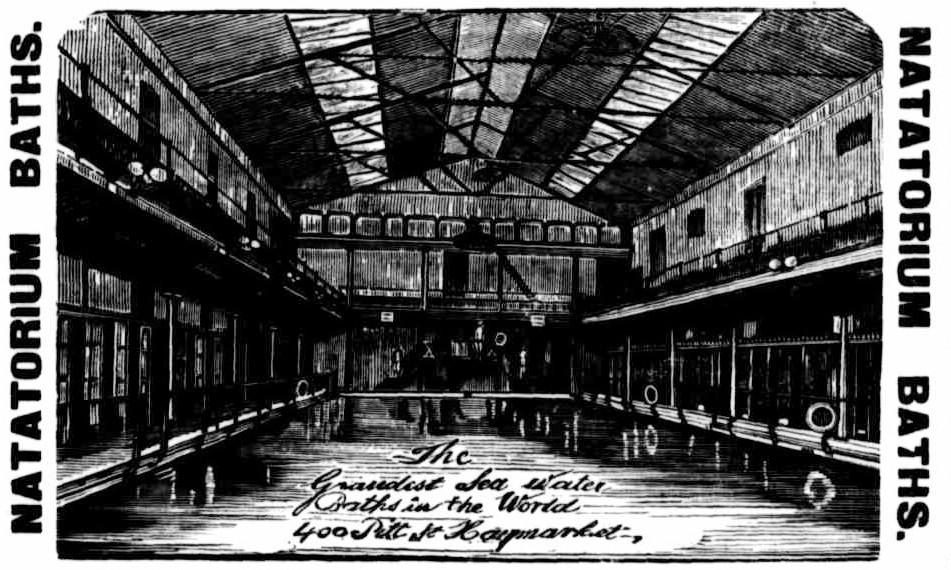
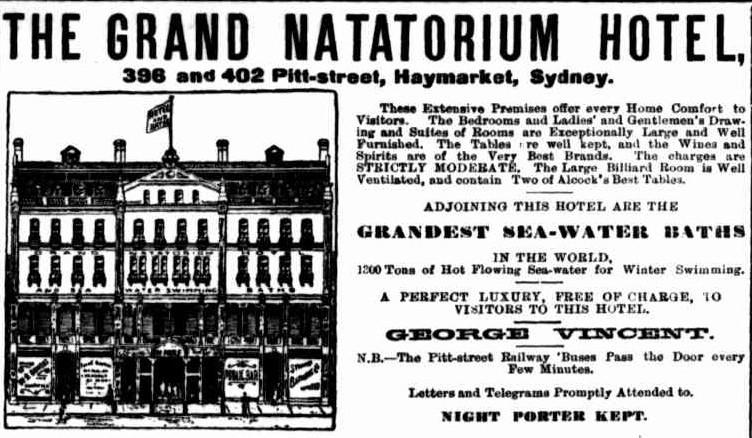
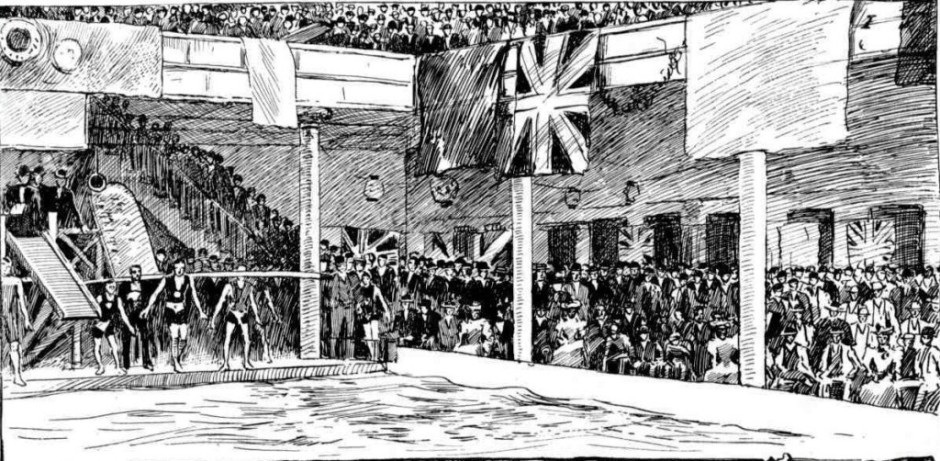


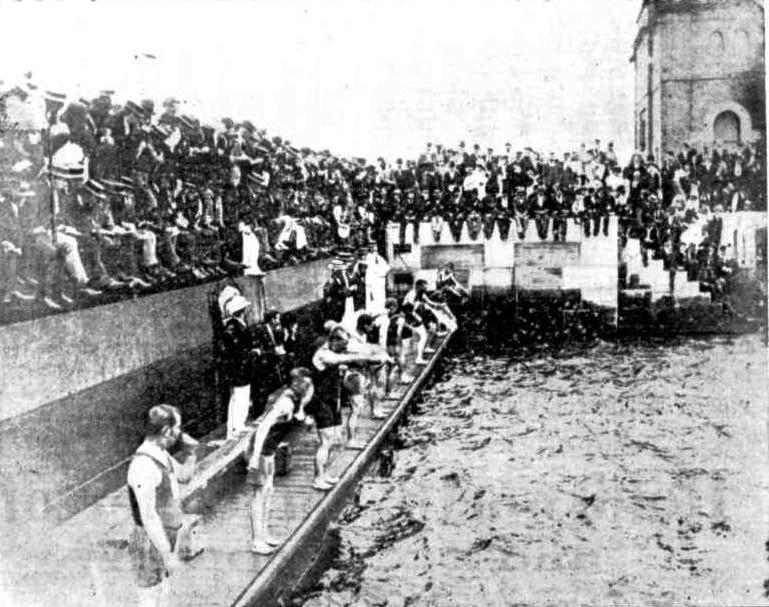
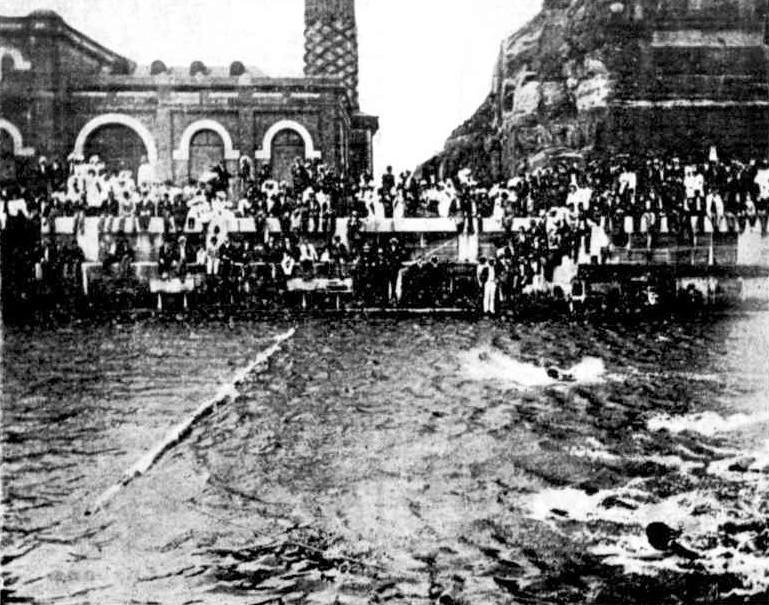
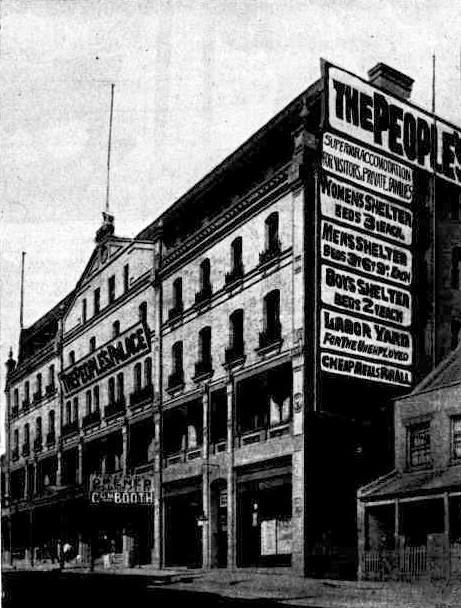 There began on January 19 a new epoch in the history of 'the Sydney (Salvation Army. The late Natatorium buildings in Pitt-street, having been secured by Commandant Booth and altered, furnished and renovated at a cost of £2300, were in the afternoon informally re-opened - under the name of the People's Palace, for the better carrying out of the army's great scheme of social reform. The undertaking the commandant regards as quite the biggest yet attempted by the Salvation Army in any part of the world, the great shelters in London, Paris, and New York not withstanding. A large number of friends accepted Commandant Booth's invitation to visit the premises and inspect its vast resources, among them being Messrs. Hawthorne and Jessep, M.L.A., Dr. Vandeleur Kelly, and Mr. M'Lachlan. _ After a hymn or two and an earnest prayer by Major Graham, the commandant explained the nature of the new undertaking, which he characterised as being as important to the city of Sydney as to the Salvation Army. All classes of people would find accommodation within the walls of the People's Palace.
There began on January 19 a new epoch in the history of 'the Sydney (Salvation Army. The late Natatorium buildings in Pitt-street, having been secured by Commandant Booth and altered, furnished and renovated at a cost of £2300, were in the afternoon informally re-opened - under the name of the People's Palace, for the better carrying out of the army's great scheme of social reform. The undertaking the commandant regards as quite the biggest yet attempted by the Salvation Army in any part of the world, the great shelters in London, Paris, and New York not withstanding. A large number of friends accepted Commandant Booth's invitation to visit the premises and inspect its vast resources, among them being Messrs. Hawthorne and Jessep, M.L.A., Dr. Vandeleur Kelly, and Mr. M'Lachlan. _ After a hymn or two and an earnest prayer by Major Graham, the commandant explained the nature of the new undertaking, which he characterised as being as important to the city of Sydney as to the Salvation Army. All classes of people would find accommodation within the walls of the People's Palace. 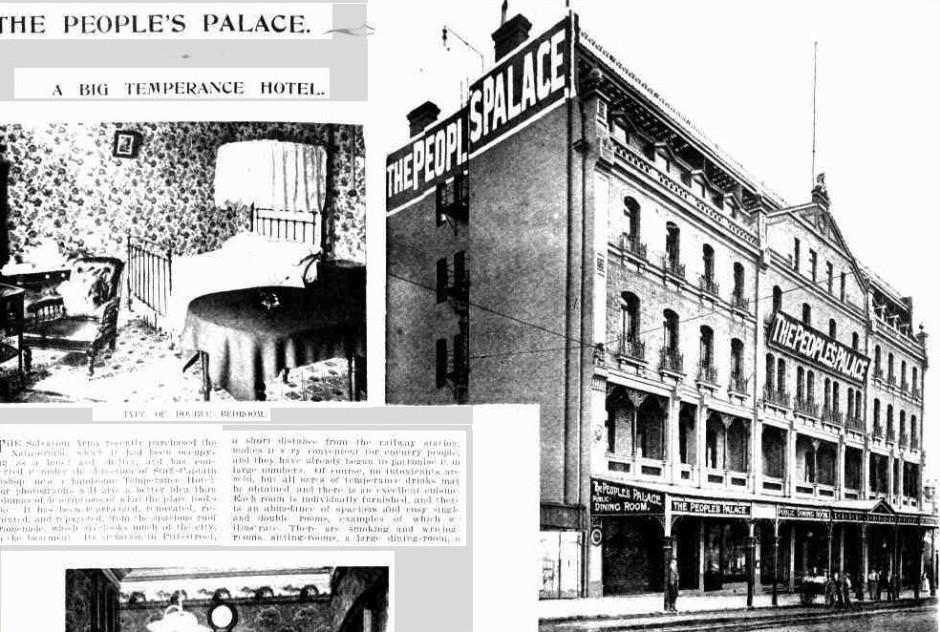
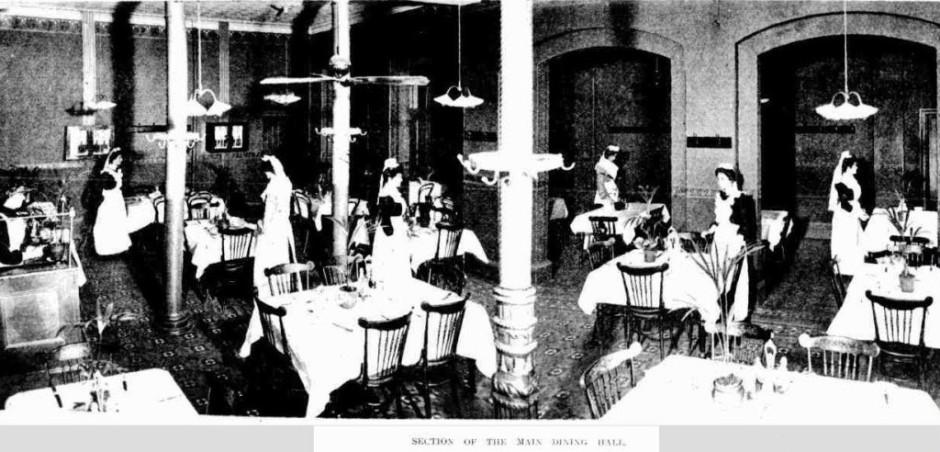
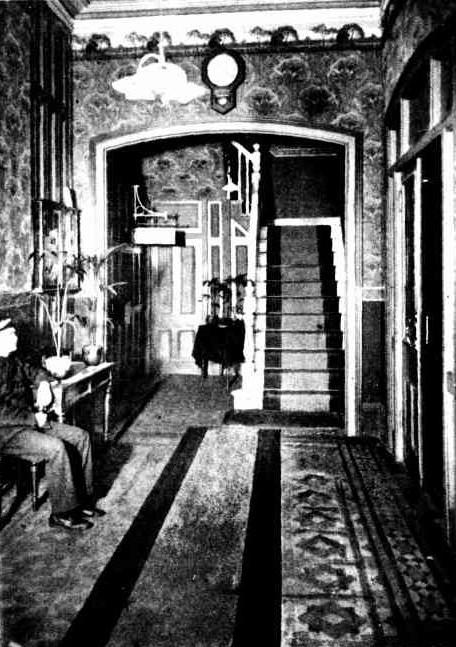 Outside fire-escapes have been arranged, and every effort ban been made to cater for the safety and comfort of guests. The whole building is lit, by electricity. Many people do not care to go to hotels for various reasons and hitherto the majority of temperance hotels have failed to hold their clientele largely because the standard of management was not kept up. People used to good hotels are not, satisfied with anything less than the comfort which they provide. The Salvation Army has had such varied experience that nothing in the way of management comes amiss to it, and it has been the success so far achieved with the People's Palace that has led to the expansion of its sphere to cater for a wider public. The 'sheller' aspect of the People's Palace has been retained on the northern side, entirely separated from the rest of the hotel, the inmates of which would find it difficult to realise that it was still carried on, and that the one kitchen staff serves both sides.
Outside fire-escapes have been arranged, and every effort ban been made to cater for the safety and comfort of guests. The whole building is lit, by electricity. Many people do not care to go to hotels for various reasons and hitherto the majority of temperance hotels have failed to hold their clientele largely because the standard of management was not kept up. People used to good hotels are not, satisfied with anything less than the comfort which they provide. The Salvation Army has had such varied experience that nothing in the way of management comes amiss to it, and it has been the success so far achieved with the People's Palace that has led to the expansion of its sphere to cater for a wider public. The 'sheller' aspect of the People's Palace has been retained on the northern side, entirely separated from the rest of the hotel, the inmates of which would find it difficult to realise that it was still carried on, and that the one kitchen staff serves both sides. 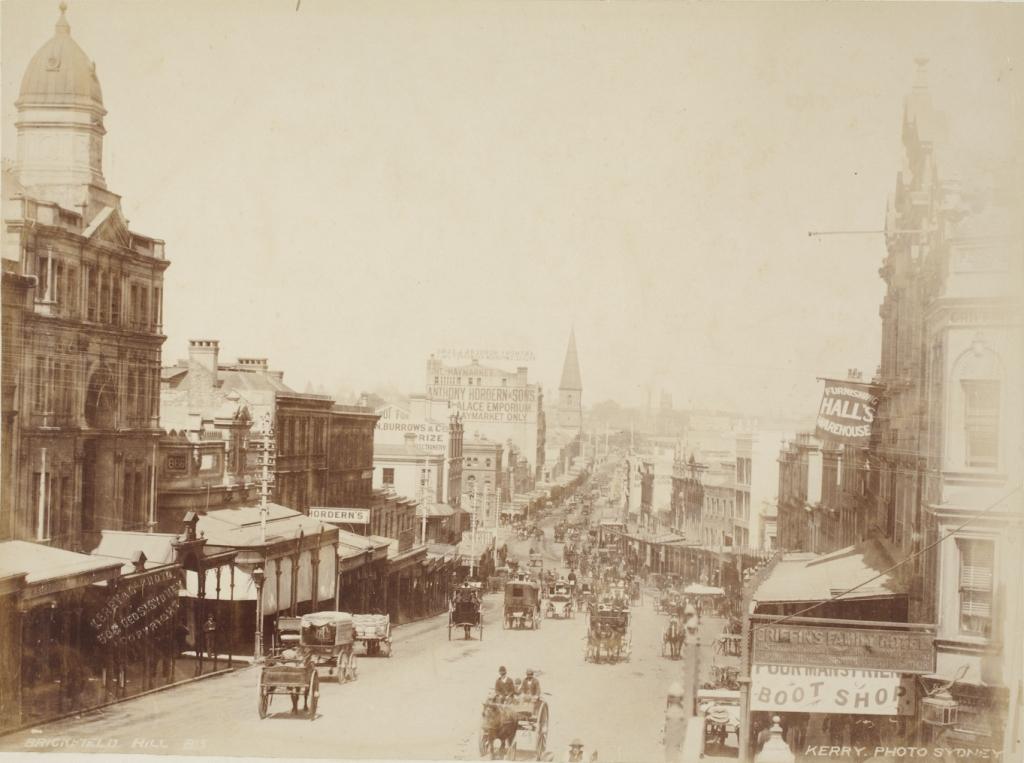
"Brickfield Hill" - the slope on George Street south of Town Hall, ca. 1890 - courtesy State Library of NSW: Image No.: a5091007h
A Few Extras:
The Palace Emporium Swimming Club's Annual Carnival.
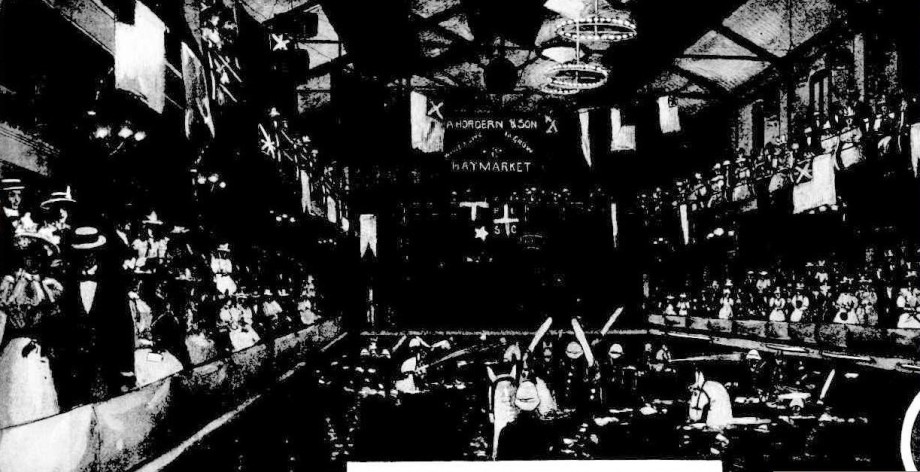
1.-Scene at the Carnival During the Balaclava Melee. 2.-Mr. E. C. V. Lane, the Winner of the President's Cup. 3.-Mr. J. H. Harris, President. 4.-Mr. H. T. Everett, Hon. Secretary and Treasurer. 5.-Start of tile Hobby Horse Race. 6.-Mr. Samuel Hordern, jun., vice-President. 7.-Mr. S. Martyn Smith, Oapta-'n. (See letterpress on .next page.)
Palace Emporium Swimming Club.
(See illustrations on previous page.)
The third annual carnival of the Palace Emporium Swimming Club,-, which took place in Sydney Natatorium on January 31, was an extremely interesting display, and was notable for, among other things, the fact that P. C. V. Lane put up an Australasian record for the 300yd race, which he covered in 3min 51 4-5sec. Tyers holds the world's amateur record, which is 3min 48 2-5sec;and Nuttall the professional, 3min 50sec. There was an attendance numbering: about 1000, and great interest was displayed in the different events. During the evening Mr. A. Wylie, of Bronte Baths, gave an exhibition of diving, remaining underwater for 1min 22sec, and traversing 66yd 2ft.Messrs, A. Welsh and W. Shirt gave an exhibition of flying dives and somersaults.
The contests resulted as under: 66 Yards Club Handicap.--First heat: A. Matthews, 20sec, 1; H. Hamilton, 24sec, 2. Time,56%sec. Second heat: G. Chidgey, 26sec, 1; II.Hopkinson, 20sec, 2. Time, 60%sec. Third heat:H. Musgrove, lOsee, 1; F. Propsting, 12sec, 2.Time, 47sec. Fourth heat: J. O. Hare, 22sec, 1;A. Morecambe, llsec, 2. Time 58%sec. Final: Chidgey, 1; Musgrove, 2; O'Hare, 3. Won by afoot, third close up. Time, 59^sec. vice-President's Handicap, 66 yards.-
Mr. Samuel Hordern, Patron of the Palace Emporium Swimming Club. Palace Emporium Derby.-J. Pritchard, onMirella, 1; S. Hordern) jun., on Aurum, 2; H. Hopkinson, on Gauliis, 3.
100 Yards Interclub Handicap (semi-finals).First heat: J. Hindmarsh (Rockdale), 29sec, 1;W. Smith (Waverley), 20sec, 2; A. Wilkins (Enterprise), 17sec, 3. Time, .lmin 21sec. Secondheat: C. Bristowe (Eastern Suburbs), 24sec, 1; T.A. Johnson (Enterprise), 17sec, 2; C. Corbett (Rockdale), 36sec, 3. Time, 1min 17sec. Third heat: T. Bell (Rockdale), 34sec, 1; P. Russell(Rockdale), 39sec, 2; J. Stevens (Parramatta),24sec, 3. Time, lmin 21sec. Final: Bell. 1;Hindmarsh, 2; Smith, 3. Won easily. Time, lmin 25sec.
The aquatic tug-of-war between the Palace Emporium S.C. and the Randwick and Coogee S.C. resulted in each team winning one tug, and a division was agreed to.
The President's Cup, distance 300 wards. English amateur record, 3min 48 2-5sec, J. H. Tyers,Manchester, July 16, 1896;. world's professional record, 3min 50sec, J. Nuttall.-F. C. V. Lane(East Sydney), 1; Syd. Cavill (Palace Emporium) 2;R. Craig (Balmain), . 3. Only three started. Cavill and Lane kept well together for eight laps,though it was noticable that Lane always gained in turning. At the last lap he had a good lead,and won amidst enthusiastic applause by about six yards. Time, 3min 51 4-5sec.
Obstacle Race, 66 yards.-First heat: J. Pritchard, 1; L. Kimmins, 2. Second heat: C. Swift,1; C. Martel, 2. The time for each heat was lmin 471/4sec, and the winners divided. Ladies' Championship of New South Wales,100 yards.-Miss J. Gibson, of the Sydney Club, was the only starter, and traversed the distance in lmin 51sec.
Water Polo Match.-This was a match between two teams from the Balmain Club, and that captained by J. Taylor won by 3 goals to nil.
The Balaclava Mêlée produced a spirited contest, in which the British chargers, mounted by S. Hordern's troopers, completely vanquished the Russians, under the command of J. Pritchard. The combat was carried out with vigor, and was provocative of great mirth.
Palace Emporium Swimming Club. (1898, February 12).Australian Town and Country Journal (Sydney, NSW : 1870 - 1907), p. 27. Retrieved from http://nla.gov.au/nla.news-article71283102
A Champion Australian Swimmer. MR GEORGE ALFRED MEADHAM.
George Alfred Meadham, winner of the Amateur Champion Swimming match at the race meeting held by the Sydney Enterprise Swimming Club in the Natatorium, Pitt-street, Sydney, on February 5, was born in Hobart(Tasmania), and is now 21 years of age. His father (Mr. Alfred Meadham) was for some years foreman smelter at the Great Cobar Copper Mine, Cobar, New South Wales; and the lad worked in the mine under his father. Some 12 months ago, young George took to swimming in salt water; and this is the first match he has taken part in. His opponents were C. Hellings (P.J.S.C.), A. L. Graham (E.S.C.), P. Murphy (B.S.C.); and three others. A good start was made; and the contestants kept well together for a few laps - the pace gradually quickening until at the 10th lap a high speed was attained, and several of the swimmers dropped out, leaving Meadham to do as he liked. He beat Hellings(who swam pluckily to the last) by about 30yds. Time for 500yds,7min 47sec. Mr. Meadham, senior, has since his arrival in Sydney settled down at the Willow Tree Inn, corner of Liverpool and Castlereagh streets, Sydney, where George says he is willing to meet any one who wishes to challenge him for the amateur championship of New South Wales. Our portrait is from a photograph supplied by Mr. Herbst, Oxford-street, Sydney. A Champion Australian Swimmer. (1890, February 22).Australian Town and Country Journal (Sydney, NSW : 1870 - 1907), p. 33. Retrieved fromhttp://nla.gov.au/nla.news-article71108291
THE NATATORIUM. Very refreshing this winter weather is a hot sea or freshwater plunge bath. The tepid salt-water swimming bath will also be found a great institution. Patronised daily by members. The Natatorium, 400 Pitt-street. THE NATATORIUM. (1895, July 21). Truth(Sydney, NSW : 1894 - 1954), p. 2. Retrieved from http://nla.gov.au/nla.news-article167954489
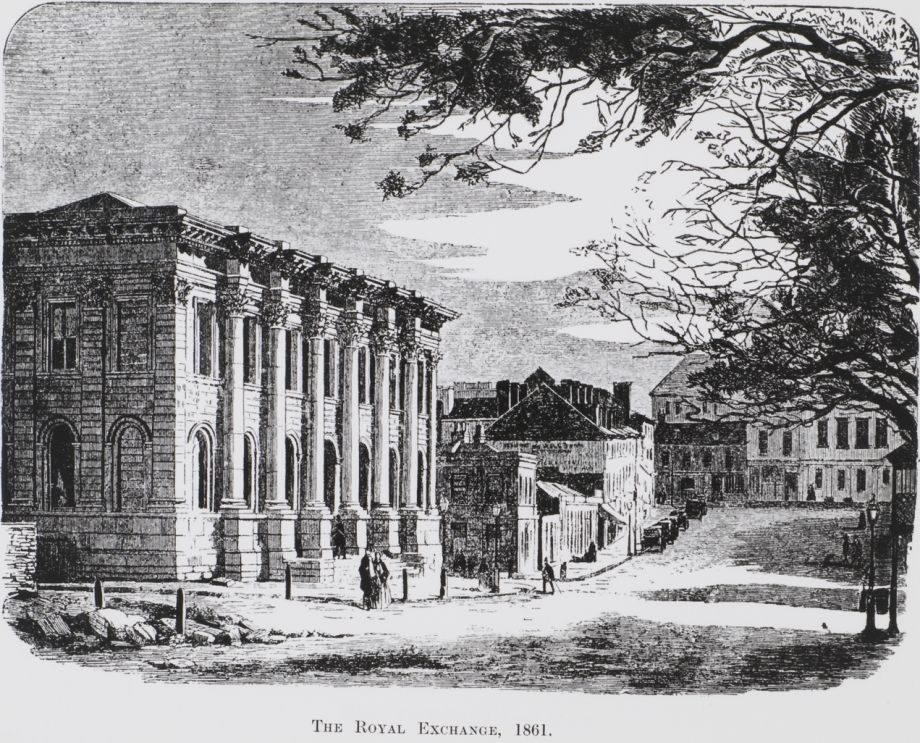
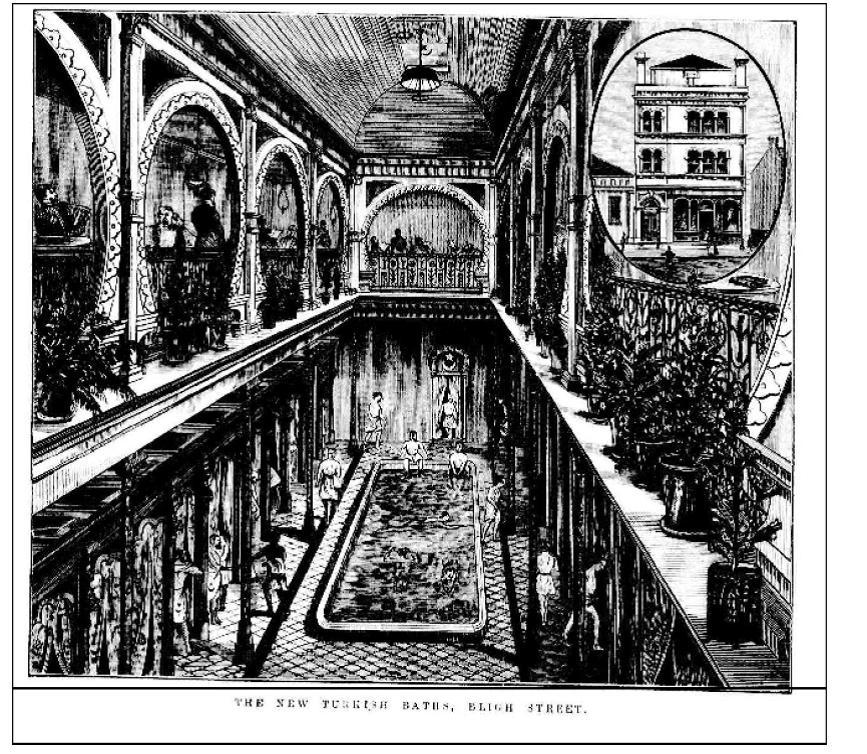
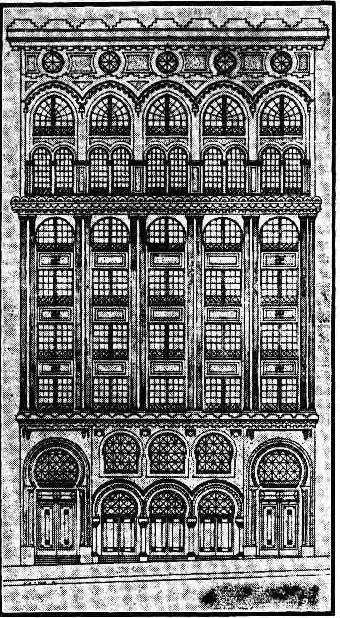
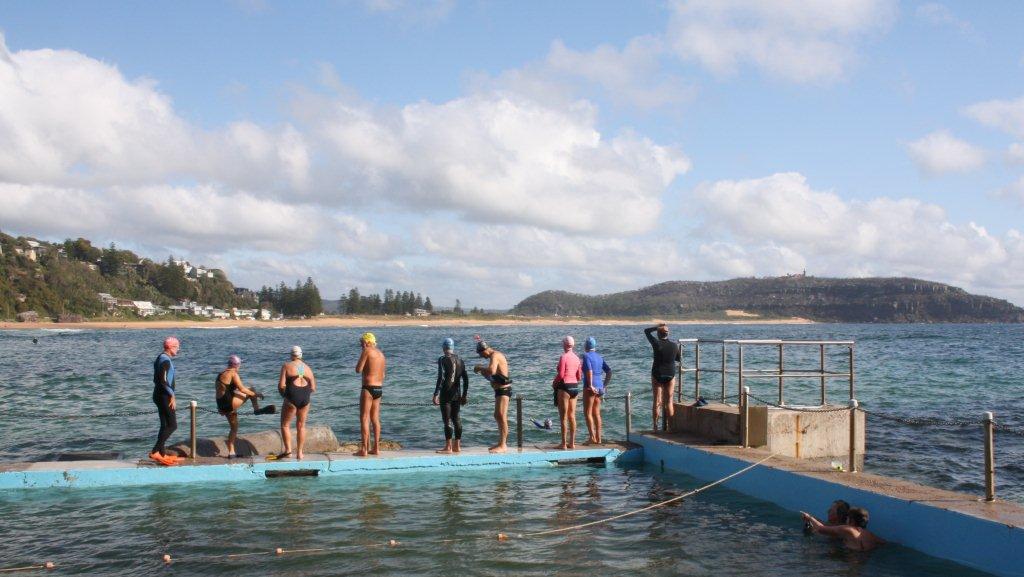
Barrenjoey Breakers at Palm Beach Rock Pool - swim all year round
Sydney's First Natatorium - by A J Guesdon, 2015.